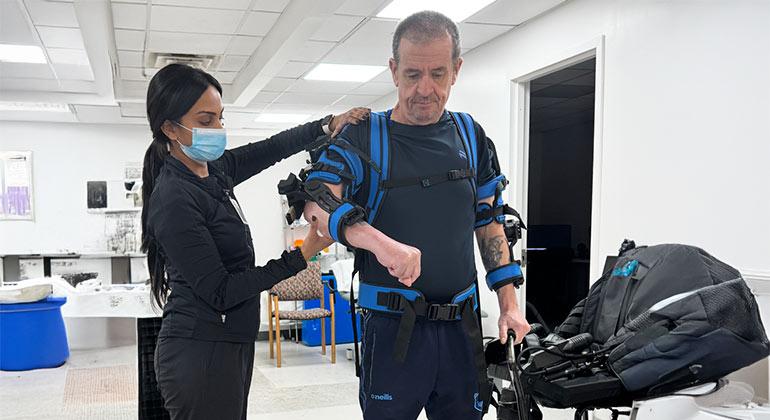
Upper Limb Rehabilitation
Our upper limb robotic training program at the Abilities Research Center (ARC) focuses on restoring function in the shoulder, elbow, forearm, wrist, hand, and fingers. The therapies we design help our patients regain muscular strength, range of motion, joint control, flexibility, precision, and coordination. Through the use of repetition, robotic technologies aid in building muscle strength, improving muscle memory, and promoting the neuroplasticity needed for regaining fine motor skills and movement.
Prior to training, patients undergo a clinical, functional, and neurophysiological evaluation, as well as a screening to determine if a caregiver is required to assist the participant during therapy. Participation also requires a physician's approval.
Technologies
Our clinicians may use one or more of these advanced technologies: